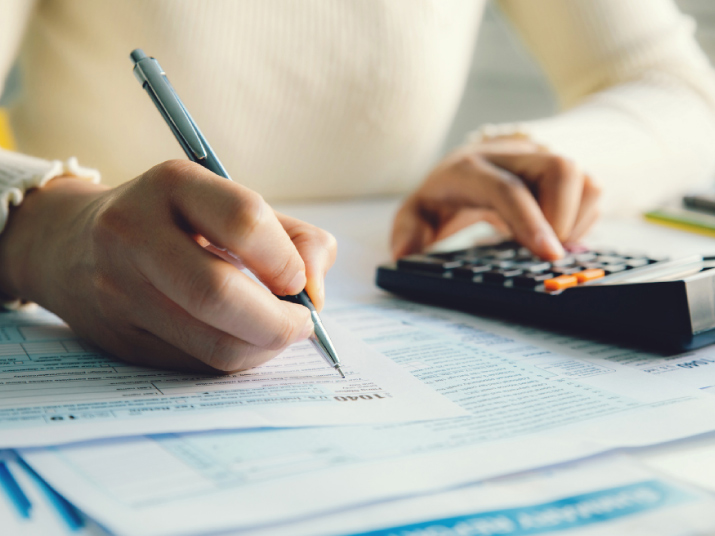
Most Effective Ways to Overcome Problems of Filing as a Sole Proprietor
With less than a month to go before the tax filing deadline, taxpayers are steeling themselves for last-minute changes, checks, and balances.
One group of individuals in particular always tend to be groping in the dark when it comes to tax return season. Given the fluidity of their situation, sole proprietors often face many challenges while preparing their tax documents.
Sure, the perks of being your boss are fantastic, but the downsides can be pretty nasty if you’re not well-versed in the taxation side of things. Below, we explore some common problems sole proprietors can face while filing their tax returns and how to overcome them. Read on to know more about the mistakes you should avoid and work around them.
Who are Sole Proprietors?

Before we dive into what they could potentially do wrong, let’s first look into who precisely sole proprietors are and what filing as a sole proprietor entails.
To begin with, sole proprietorships are one of the most common business structures in the US, owing to their flexible structure and potential for easy establishment.
Essentially, there is no difference between the individual and the business for taxation purposes: The IRS considers the business owner a legal business entity and an individual.
Individuals can receive the entirety of their business profits but are also equally liable for all debt and expenses incurred by the business. Business income passes through the business to the business owner, who then reports on their tax returns. This drastically reduces paperwork but can often complicate matters if figures are not declared correctly.
Additionally, sole proprietors are likely to be individuals whose professions allow them to either work remotely or require traveling to customers.
This entity is typically devoid of the traditional ‘brick-and-mortar’ structure. Typical professions that may fall under sole proprietorship include:
- Professional cleaners/organizers
- Home healthcare service providers
- Freelancers (content creators, photographers, web developers, etc.)
- Business consultants or public speakers
What Problems Do Sole Proprietors Face?

Sole proprietors have to be extra careful about handling tax obligations, especially since the consequences could be an IRS audit or simply leaving money on the table.
Common issues include:
1. High tax bills and low refunds
Most self-employed taxpayers tend to lose out on sizable refunds and the opportunity to lower their tax bills. This is simply because sole proprietors are unaware of the deductible expenses they can claim against their income.
Running one’s own business can be challenging enough, so having to pay hefty tax bills shouldn’t be another burden that sole proprietors take on.
It is advisable to keep accurate and detailed records of all expenditures and maintain separate checkbooks for business and individual purchases. Doing so can simplify providing proof of deductible expenses and significantly lower one’s taxable income.
Common deductible expenses include:
Start-up costs: includes operational costs and expenses incurred to get the business up and running, such as repairs, advertising, and purchasing supplies.
Transport and automobile costs: money spent on keeping a vehicle roadworthy, especially helpful if one’s business is dependent on traveling by cars, such as bakery and parcel-delivery businesses.
Insurance premiums: expenses incurred while covering oneself and one’s workspace from possible losses.
Legal and professional fees: money spent on hiring financial and legal consultants for their expertise in the field.
Educational fees: particularly useful for business owners that have attended classes that foster professional development in their field.
2. Increased risk of penalty charges
No taxpayer wants trouble with the law, especially not with the IRS regarding taxation and discrepancies in the amounts filed.
Sole proprietors are exposed to a higher risk of paying penalty fees since other taxes must be paid over and above income and personal taxes.
Being aware of these taxes and their payment deadlines is critical to keeping everything kosher in tax documentation.
Sole proprietors should watch out for the following taxes:
Federal and State estimated taxes: sole proprietors are responsible for estimating their annual tax bill for all income earned and making quarterly payments to the IRS.
Federal and State income taxes: sole proprietors must accurately declare all business profits and losses and any other personal income. Business owners should be aware that their tax bracket is decided based on both personal and business income and must be prepared to pay taxes accordingly.
Self-employment taxes: sole proprietors needn’t wait for traditional employers to withhold portions of their income for FICA contributions. Instead, they should be making these Medicare and Social Service contributions while paying their taxes.
3. Delays in refunds & problems with incomplete tax documents
It’s no secret that backlogs inundate the IRS, but processing times are worsened by a lack of ‘open and shut cases. In addition, going back and forth with taxpayers about errors in their forms, missing documents, and invalid proofs makes life difficult for both parties.
To ensure that you present a textbook tax filing case, you must submit all required forms and documents and triple-check every information you’ve provided—right down to crossing your I’s and dotting your T’s. Silly errors and forgetfulness can delay refunds, which can be avoided by being well-prepared.
Sole proprietors must submit the following documents:
- Schedule SE: must be submitted if your business earned more than $400 worth of revenue
- Form 1040, Schedule C: provides details about business income, expenses, and inventory.
- All other documents are required for your income tax filing.
Also read: How to File an IRS Form 1040: A Step-Wise Guide
How Can AOTAX Help You And Your Business?
With close to 20 years in the business of helping Indian residents in the US file their taxes effortlessly, AOTAX is primed to answer all your questions and get you the best return possible.
We make sure you consult with some of the best tax professionals in the business to help you plan and prepare for tax season without worrying about a possible audit from the IRS.
If you’re looking for a stress-free tax submission, sign up for free with us today!







Recent Comments